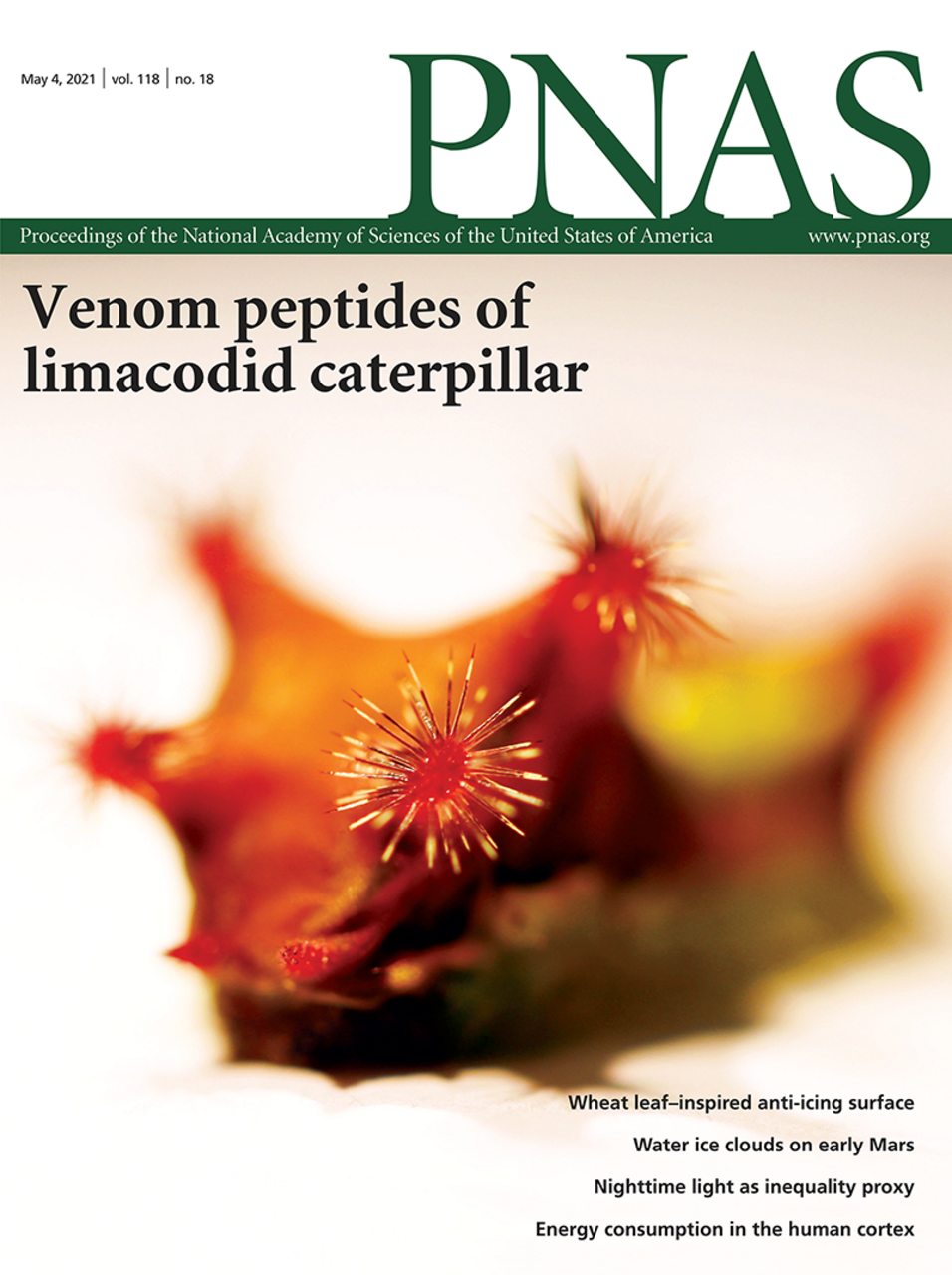Walker AA, Robinson. SD, Paluzzi J-PV, Merritt DJ, Nixon SA, Schroeder CI, Jin J, Goudarzi MH, Kotze AC, Dekan Z, Sombke A , Alewood PF, Fry BG, Epstein ME, VetterI & King GF. 2021
Proceedings of the National Academy of Sciences May 2021, 118 (18) e2023815118; DOI: 10.1073/pnas.2023815118. Link. Published online April 2021
Abstract
Venoms have evolved independently several times in Lepidoptera. Limacodidae is a family with worldwide distribution, many of which are venomous in the larval stage, but the composition and mode of action of their venom is unknown. Here, we use imaging technologies, transcriptomics, proteomics, and functional assays to provide a holistic picture of the venom system of a limacodid caterpillar, Doratifera vulnerans. Contrary to dogma that defensive venoms are simple in composition, D. vulnerans produces a complex venom containing 151 proteinaceous toxins spanning 59 families, most of which are peptides <10 kDa. Three of the most abundant families of venom peptides (vulnericins) are 1) analogs of the adipokinetic hormone/corazonin-related neuropeptide, some of which are picomolar agonists of the endogenous insect receptor; 2) linear cationic peptides derived from cecropin, an insect innate immune peptide that kills bacteria and parasites by disrupting cell membranes; and 3) disulfide-rich knottins similar to those that dominate spider venoms. Using venom fractionation and a suite of synthetic venom peptides, we demonstrate that the cecropin-like peptides are responsible for the dominant pain effect observed in mammalian in vitro and in vivo nociception assays and therefore are likely to cause pain after natural envenomations by D. vulnerans. Our data reveal convergent molecular evolution between limacodids, hymenopterans, and arachnids and demonstrate that lepidopteran venoms are an untapped source of novel bioactive peptides.

